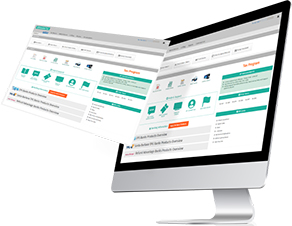Tax season doesn’t start in January—it starts now. The most efficient preparers know that setting up their tax software early leads to faster onboarding, fewer mistakes, and a much smoother workload when things get busy.
Here’s why early adoption of UltimateTax software gives you an edge—and how to get started before peak season hits.
Benefits of Early Tax Software Adoption
1. Simplify Your Workflow Before the Rush
Get familiar with UltimateTax’s interface, features, and client tools well before deadlines hit. From automated calculations to unlimited e-filing, starting early lets you fine-tune your workflow, reduce manual entry, and focus on client service—not catching up.
2. Stay Ahead of Tax Law Changes
Set up early to ensure you’re always working with the most current IRS forms, tax law updates, and compliance safeguards.
3. Deliver Faster, More Reliable Client Services
Clients expect speed and accuracy—especially during tax season. With features like remote signature collection, secure client portals, and easy document uploads, UltimateTax helps you deliver a seamless client experience right from the start.
4. Strengthen Data Security and System Readiness
Early adoption gives you time to test backups, security settings, and client data imports—critical for protecting sensitive information. You’ll head into peak season knowing your system is stable, secure, and ready.
5. Save Money with Pre-Season Discounts
UltimateTax offers flat-rate pricing with no surprise fees—and if you get started early, you may qualify for promotional pricing or onboarding support. It’s one more reason not to wait.
Steps to Get Started with UltimateTax Before the Season Hits
-
Choose the right package: Review UltimateTax’s software options—1040 only, business add-ons, or enterprise solutions. Not sure which fits? Schedule a quick call and we’ll help match the best fit to your goals and volume.
-
Activate your Account & Set Up Your Portal: Once you purchase your plan, you’ll get instant access to the software dashboard. Set up your firm info, EFIN, and team users now so you’re ready when clients start calling.
-
Import Clients and Prep Your Workflow: Bring in last year’s client data or start building your new database. Use built-in tools like document checklists, engagement letters, and ProClient integrations to organize everything in advance.
-
Test E-Filing and Secure Signatures: Try a test return or simulate the e-filing process. Verify how remote signatures work, how document uploads appear in your portal, and how your bank product setup connects (if using).
-
Train Your Team or Learn the Tools: Whether it’s your first season or your 15th, explore our training guides, walkthroughs, and live support. UltimateTax is simple by design—but early setup gives you the time to feel confident before deadlines hit.
Conclusion: Start Strong, Stress Less
Tax season is hard enough without scrambling to set up your tools at the last minute. When you get UltimateTax up and running early, you gain more than just a head start—you gain time, peace of mind, and a smoother experience for you and your clients.
Whether you’re switching from another software or starting fresh, now’s the time to prepare.
👉 Ready to simplify tax season? Talk to our team or choose your package now.






